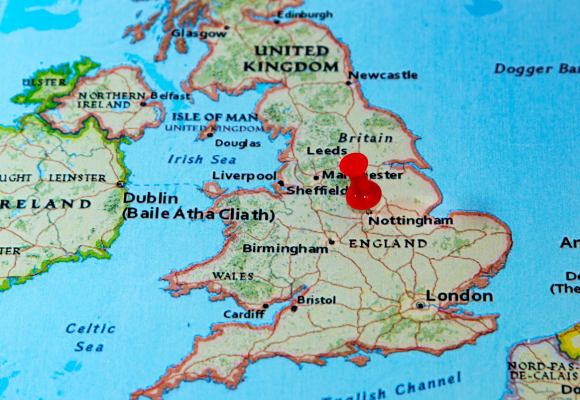A Guide to CeMAP Module 2: Mortgages (MORT)
CeMAP Module 2 is crucial for anyone looking to gain a comprehensive understanding of the mortgage industry. This module covers the mortgage process in detail, from the initial application to handling issues that may arise after completion. In this guide, we’ll explore what you can expect from Module 2, how you’ll be assessed, and some tips to help you succeed.
Unit Breakdown
Unit 3: Mortgage Law, Policy, Practice, and Markets
CeMAP Unit 3 introduces you to the legal aspects of mortgages and the broader property market. Understanding these foundations is essential for anyone entering the mortgage industry.
Topics Covered:
- Property: Learn about property as an asset, different ownership types, and the role of property in financial planning.
- The Mortgage Market: Overview of the UK mortgage market, key players, and market dynamics.
- Borrowers: Different types of borrowers, their needs, and how they are assessed for mortgage suitability.
- Mortgage Regulation: The legal framework governing mortgage lending, including key regulations and bodies.
- Purchase and Reversion Plans: Understand shared ownership, equity release, and how these schemes affect mortgage advice.
- Mortgage and Property Law: Key legal principles that apply to mortgages and property transactions.
- Land and Property Titles: Importance of land registration and the different types of land titles.
- Buying Process: A step-by-step guide to the buying process, from offer to completion.
- Legal Aspects of Buying: Legal obligations of buyers and sellers, and how these impact mortgage advice.
- Regulation: How various regulations influence the mortgage process and the advice given by professionals.
Unit 4: Mortgage Applications
Unit 4 delves into the practicalities of mortgage applications, focusing on the role of the mortgage adviser and the steps involved in assessing and securing a mortgage for a client.
Topics Covered:
- The Role of the Mortgage Advisor: Responsibilities of a mortgage adviser in guiding clients through the mortgage process.
- Assessing the Borrower’s Financial Status: Methods for evaluating a borrower’s income, outgoings, and overall financial health.
- Credit Status: Understanding credit scores, credit reports, and how they affect mortgage eligibility.
- Suitability Requirements: Determining the suitability of a mortgage product for a particular borrower.
- Property Assessment: Importance of property valuation, surveys, and how they affect the mortgage offer.
- Valuations and Surveys: Types of valuations and surveys available, and their significance in the mortgage process.
- Planning Consent and Building Regulations: How planning permissions and building regulations impact property purchases.
- Environmental Factors: Influence of environmental considerations, such as flood risks, on mortgage advice.
- Security and Professional Fees: Legal and financial security required in mortgage agreements and associated fees.
Unit 5: Mortgage-Related Protection Products
This unit introduces protection products, emphasizing their role in financial planning and their integration into mortgage advice.
Topics Covered:
- Financial Protection: Various financial protection products available, including life insurance, critical illness cover, and income protection.
- Financial Planning: Role of financial planning in advising clients on protection products.
- The Types of Financial Protection: Detailed look at different protection products and their relevance to mortgage clients.
- Protection Advice: How to provide tailored advice on protection products based on individual client needs.
Unit 6: Mortgage Payment Methods and Post-Completion Issues
Unit 6 explores the various methods of mortgage repayment and the potential issues that may arise after the mortgage is completed.
Topics Covered:
- Mortgage Repayment Methods: Differences between repayment mortgages, interest-only mortgages, and other repayment strategies.
- Endowment Policies: How endowment policies work as a repayment vehicle for interest-only mortgages.
- Other Repayment Vehicles: Alternative methods for repaying mortgages, such as ISAs and pension-linked mortgages.
- Interest Rate Options: Overview of different interest rate options, including fixed, variable, and tracker rates.
- Mortgage Products: Detailed exploration of the various mortgage products available in the market.
- Mortgage Schemes: Special mortgage schemes, such as Help to Buy, and their impact on mortgage advice.
- Raising Funds from Property: How equity release and other methods can be used to raise funds from property.
- Transferring Mortgages: Process and considerations involved in transferring a mortgage to a new lender or property.
- Arrears and Debt: Managing arrears and debt, and the rights of lenders in these situations.
- Lenders Rights: Understanding the legal rights of lenders in the event of default or other issues post-completion.
Assessments
The assessment for CeMAP Module 2 is conducted through a two-hour electronic multiple-choice exam, divided as follows:
- Unit 3 and Unit 4: Each has 25 multiple-choice questions.
- Unit 5: Contains 20 multiple-choice questions.
- Unit 6: Includes 30 multiple-choice questions.
To pass each of CeMAP module 2’s units, you must achieve at least 70%. Scores of 80% and 90% will earn you a merit and distinction, respectively. If you do not pass a unit, you will need to retake that specific section.
Study Tips
- Understand the Syllabus: Familiarize yourself with the syllabus to know what key topics, such as the mortgage application process and legal considerations, are covered in Module 2.
- Use Quality Study Materials: Invest in official study materials and resources from the London Institute of Banking & Finance (LIBF) and complement them with reputable online courses and revision guides.
- Create a Study Schedule: Allocate time for each topic, ensuring comprehensive coverage before the exam.
- Focus on Key Areas: Pay special attention to complex topics like different types of mortgages and legal considerations, as they are often heavily tested.
- Practice with Past Papers: Regular practice with past exam papers will help you become familiar with the format and identify areas where you need more practice.
- Use Flashcards: Create flashcards for important definitions, key concepts, and processes to reinforce your memory and quick recall.
- Join Study Groups: Discuss difficult topics with peers in study groups or online forums to gain new insights and understanding.
Exam Techniques
- Read Questions Carefully: Ensure you understand what is being asked, paying close attention to keywords that might change the meaning.
- Time Management: Manage your time effectively during the exam, allocating a specific amount of time to each question.
- Eliminate Wrong Answers: Use the process of elimination to narrow down your choices, increasing your chances of selecting the correct answer.
- Answer Every Question: Answer all questions, even if you have to guess. There is no penalty for wrong answers.
- Review Your Answers: If time permits, review your answers to catch any mistakes or overlooked questions.
General Advice
- Stay Calm and Confident: Confidence and a calm mindset can significantly impact your performance. Ensure you are well-rested and relaxed before the exam.
- Healthy Routine: Maintain a healthy study routine that includes regular breaks, exercise, and adequate sleep.
- Seek Help if Needed: Don’t hesitate to seek help from tutors or online resources if you’re struggling with certain topics.
Key Areas to Focus On
- Types of Mortgages: Understand different mortgage types such as fixed-rate, variable-rate, tracker, and offset mortgages, along with their features, benefits, and drawbacks.
- Mortgage Application Process: Master the steps involved in applying for a mortgage, including affordability assessments, credit checks, and required documentation.
- Legal Considerations: Study mortgage law, the role of solicitors, conveyancing, and the legal rights and obligations of borrowers and lenders.
- Mortgage Products and Services: Learn about various mortgage products available in the market and their suitability for different types of borrowers.
- Repayment Methods: Grasp the differences between interest-only and repayment mortgages and their implications for borrowers.
CeMAP Module 2 Pass Rate
While pass rates can vary, feedback from students indicates that the first-time pass rate for this module is over 93%. Following a disciplined study plan and utilizing available resources will greatly increase your chances of success.
CeMAP Module 2 Example Questions
Here are a few example questions to give you a taste of what to expect in the exam:
- The LIBOR rate (London Inter-Bank Offered Rate) is usually set between:
- a) 1 to 10 basis points above the bank rate
- b) 10 to 20 basis points above the bank rate
- c) 20 to 30 basis points above the bank rate
- d) 30 to 40 basis points above the bank rate
- Correct Answer: b) 10 to 20 basis points above the bank rate
- For a regulated mortgage, the dwelling must occupy:
- a) At least 25% of the land it is on.
- b) At least 40% of the land it is on.
- c) At least 50% of the land it is on.
- d) At least 85% of the land it is on.
- Correct Answer: b) At least 40% of the land it is on.
- When a lender has issued a binding offer, it must allow the borrower a reflection period of at least:
- a) 7 days
- b) 10 days
- c) 14 days
- d) 28 days
- Correct Answer: a) 7 days
By following these tips and maintaining a disciplined approach to your studies, you’ll be well-prepared to pass CeMAP Module 2.





